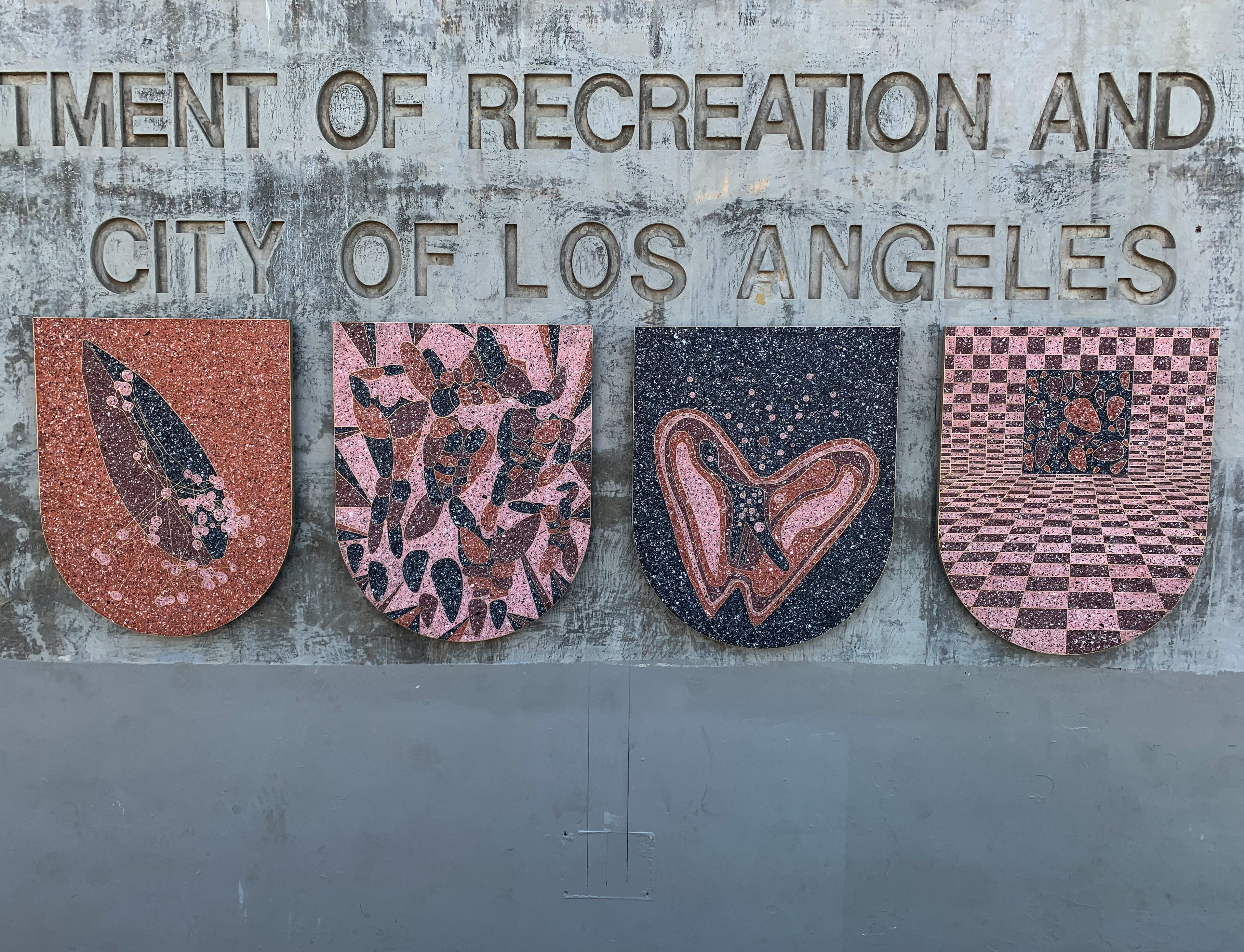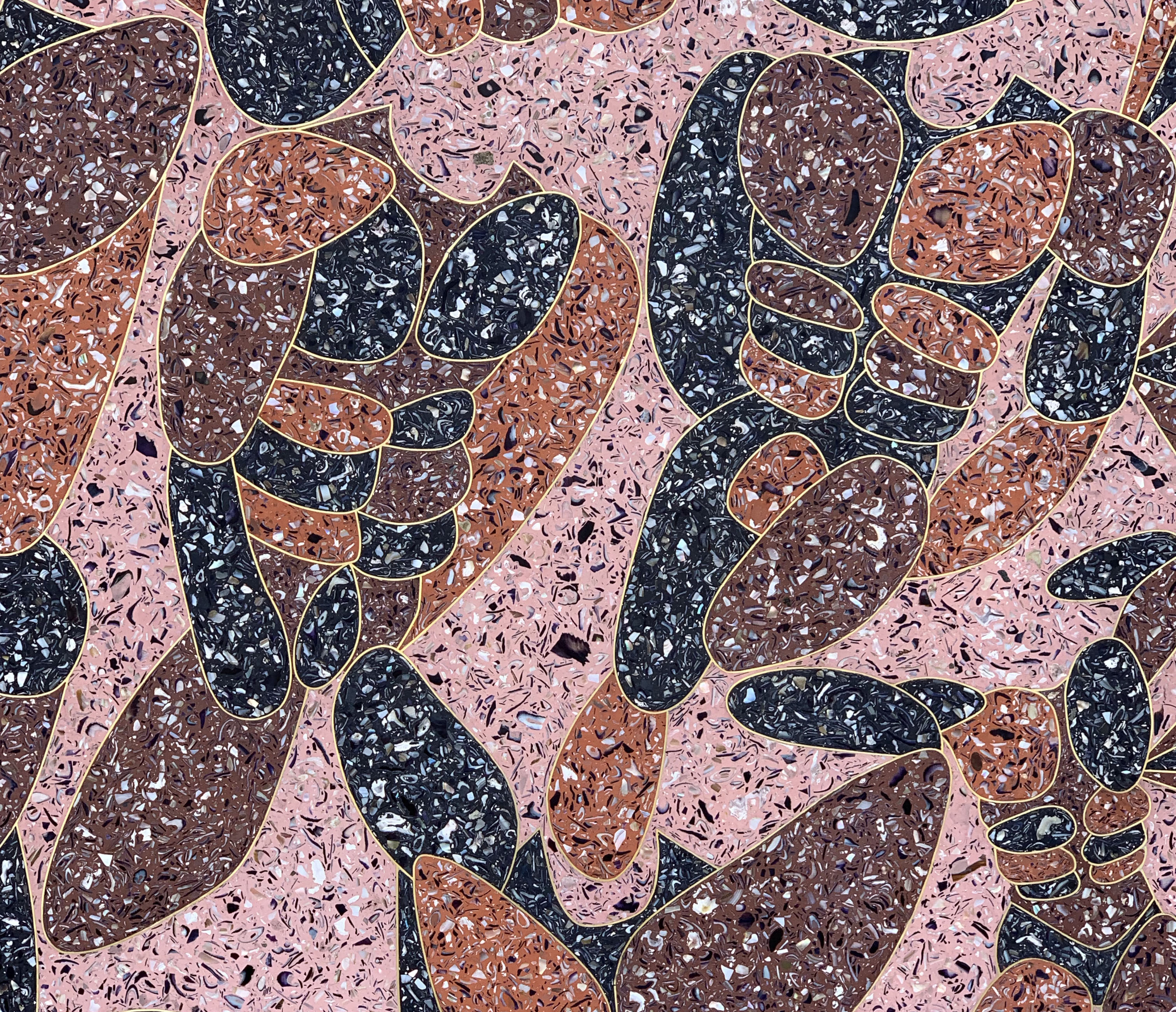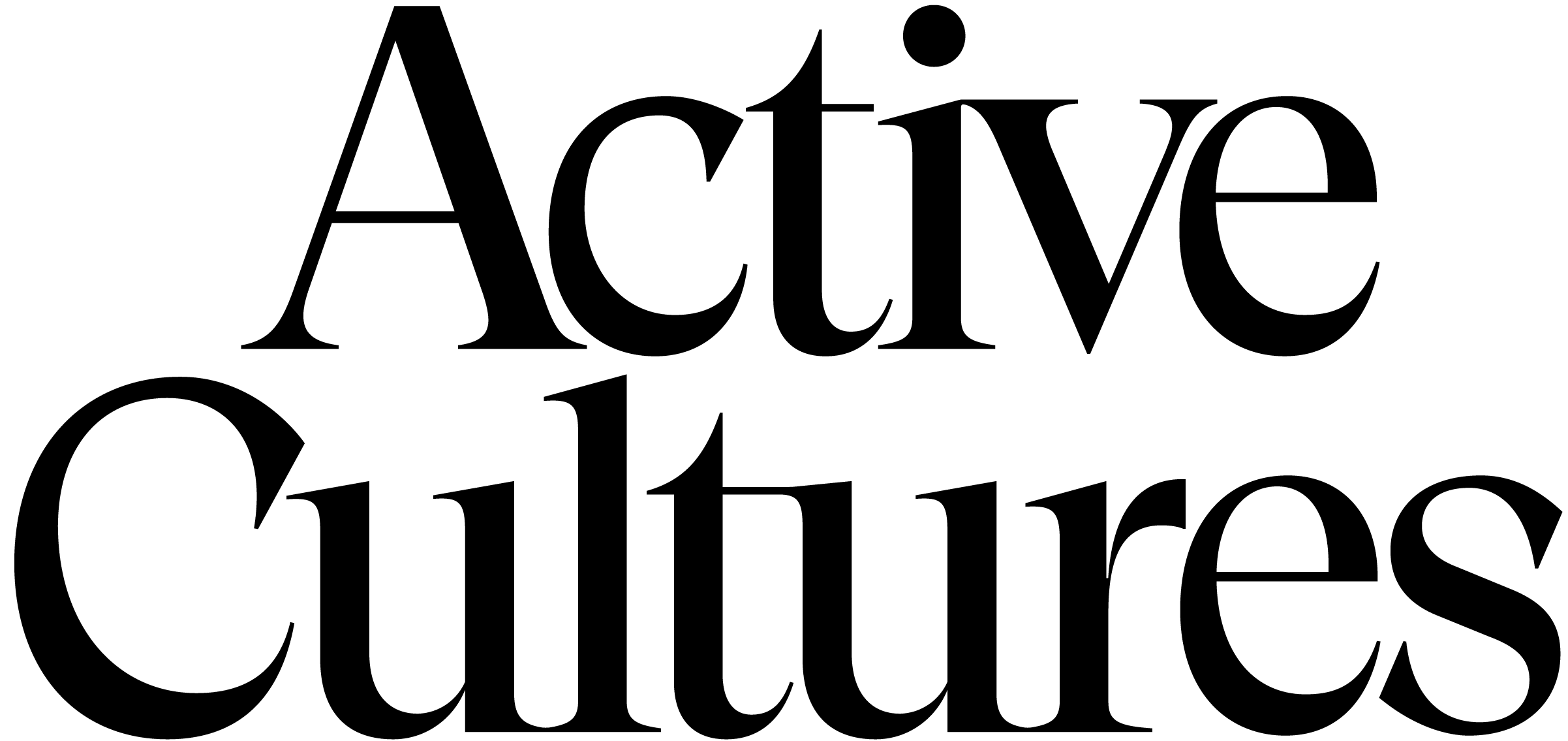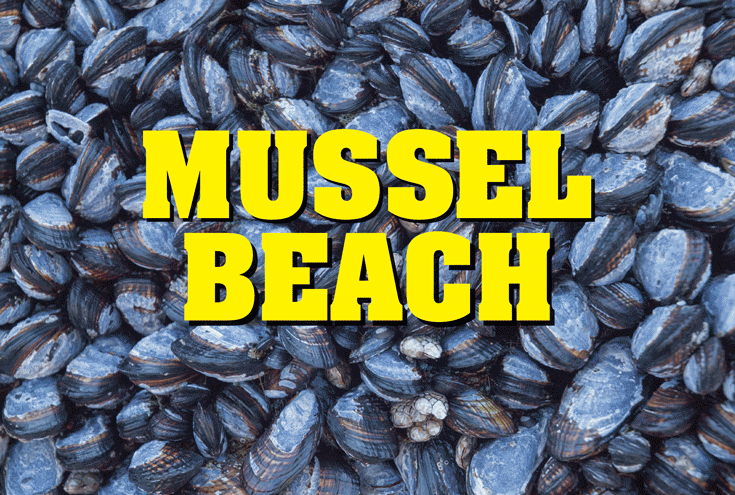"Mussels Will Work It Out" was published in Active Cultures' Digest, Issue 01, November 2019.
This piece is an edited excerpt from Mussel Beach, commissioned by the City of Los Angeles DCA for CURRENT:LA Public Art Triennial 2019.
__
Cooking Sections (Daniel Fernández Pascual & Alon Schwabe) is a duo of spatial practitioners based out of London. It was born to explore the systems that organize the WORLD through FOOD. Using installation, performance, mapping and video, their research-based practice explores the overlapping boundaries between visual arts, architecture and geopolitics. Since 2015, they have been working on multiple iterations of the long-term site-specific CLIMAVORE project exploring how to eat as humans change climates. In 2016 they opened The Empire Remains Shop, a platform to critically speculate on implications of selling the remains of Empire today. Their first book about the project was published by Columbia Books on Architecture and the City.
Cooking Sections was part of the exhibition at the U.S. Pavilion, 2014 Venice Architecture Biennale. Their work has also been exhibited at the 13th Sharjah Biennial; CURRENT:LA 2019, Manifesta12, Palermo; Lafayette Anticipations, Paris; Serpentine Galleries, London; Atlas Arts, Skye; Neue Nationalgalerie, Berlin; Storefront for Art & Architecture, New York; Peggy Guggenheim Collection; HKW Berlin; Akademie der Künste, Berlin; 2016 Oslo Architecture Triennale; Brussels ParckDesign; and have been residents in The Politics of Food at Delfina Foundation, London. They currently lead a studio unit at the Royal College of Art, London.
This piece is an edited excerpt from Mussel Beach, commissioned by the City of Los Angeles DCA for CURRENT:LA Public Art Triennial 2019.
__
Cooking Sections (Daniel Fernández Pascual & Alon Schwabe) is a duo of spatial practitioners based out of London. It was born to explore the systems that organize the WORLD through FOOD. Using installation, performance, mapping and video, their research-based practice explores the overlapping boundaries between visual arts, architecture and geopolitics. Since 2015, they have been working on multiple iterations of the long-term site-specific CLIMAVORE project exploring how to eat as humans change climates. In 2016 they opened The Empire Remains Shop, a platform to critically speculate on implications of selling the remains of Empire today. Their first book about the project was published by Columbia Books on Architecture and the City.
Cooking Sections was part of the exhibition at the U.S. Pavilion, 2014 Venice Architecture Biennale. Their work has also been exhibited at the 13th Sharjah Biennial; CURRENT:LA 2019, Manifesta12, Palermo; Lafayette Anticipations, Paris; Serpentine Galleries, London; Atlas Arts, Skye; Neue Nationalgalerie, Berlin; Storefront for Art & Architecture, New York; Peggy Guggenheim Collection; HKW Berlin; Akademie der Künste, Berlin; 2016 Oslo Architecture Triennale; Brussels ParckDesign; and have been residents in The Politics of Food at Delfina Foundation, London. They currently lead a studio unit at the Royal College of Art, London.
"I didn't know these muscles existed!," we say when we sense the unworked insides of our body, when we find ourselves sore in a new place.
"I didn't know these mussels existed!," we say when we recognize the disappearance of the California mussel, a threatened bivalve living in Pacific waters.
You are standing on Mussel Beach, a place where before human muscles, there were mollusk-ular mussels.
You may well wonder how oiled muscles overtook salt-watered mussels; how shaping biceps, butts, pecs, traps, and triceps is deeply entwined with mussels, barnacles, oysters, and clams.
Before the LA coast was shaped, before Venice was dug out and drained, you wouldn't have been surrounded by California palms, but by what frontier boosters called an "uninhabitable swamp." But the shellfish-laden wetland, where Mussel Beach sits today, had been a food source for the Kizh Nation for over 7,000 years, until they were enslaved by the Spanish to build San Gabriel Mission.
Before there was a sandy beach, there was an oil field. If this was 1938, you would be standing in between derricks pumping petrochemicals out of the ground.
When the oil ran out, these no-man's-lands became marginal-man's-lands: iron men and queer souls began to gather on the artificial beach and newly paved grounds to exercise and re-form their bodies.
The original Muscle Beach formed naturally in Santa Monica. The open-air gym fed off the unique demographics of LA's body-centric subcultures: beach boys, Nature boys, surfer boys, skateboarders, pin-up girls, acrobats, gymnasts; Hollywood stunts, hunks, and navy men.
As oil wells ran dry, gallons of suntan oil began to flow instead.
Over the past 100 years, mussels have experienced one of the highest rates of species extinction in the US. But mussels still hang onto the last rocks of Venice Beach as they train and fortify themselves against the elements—and us.
Mussels can also teach us how to toughen up. Just like humans, mussels evolved to exercise their muscles.
The rocky shore is the mussel gym, where mussels train to fight against daily cycles of fatigue and stress: air temperatures rise and drop, waves crashing or receding leave them exposed to the sun, cold currents intermix with hot currents, concentrations of chemicals and plastics in the water vary.
In the intertidal gym, mussels compete with other animals and plants for space. Chains of fused mussel shells may look lifeless, but they are constantly working out. With every wave, the shells are ready to quickly open.
To resist ocean acidification, California mussels are building thicker shells. For thousands of years, shell thickness has been relatively uniform. But the ocean chemistry is changing. Mussels from the 1970s were very different from the mussels of today. The crystals in mussel shells are becoming smaller and more disorganized. With more magnesium in the water, mussels are losing control over what they are actually doing. There is a new routine at the intertidal gym.
Remember. With every mussel you eat, you build muscle. With every muscle you build, you help cultivate mussels.
Those mussels do exist.
Eat, repeat. Be shellfish.
"I didn't know these mussels existed!," we say when we recognize the disappearance of the California mussel, a threatened bivalve living in Pacific waters.
You are standing on Mussel Beach, a place where before human muscles, there were mollusk-ular mussels.
You may well wonder how oiled muscles overtook salt-watered mussels; how shaping biceps, butts, pecs, traps, and triceps is deeply entwined with mussels, barnacles, oysters, and clams.
Before the LA coast was shaped, before Venice was dug out and drained, you wouldn't have been surrounded by California palms, but by what frontier boosters called an "uninhabitable swamp." But the shellfish-laden wetland, where Mussel Beach sits today, had been a food source for the Kizh Nation for over 7,000 years, until they were enslaved by the Spanish to build San Gabriel Mission.
Before there was a sandy beach, there was an oil field. If this was 1938, you would be standing in between derricks pumping petrochemicals out of the ground.
When the oil ran out, these no-man's-lands became marginal-man's-lands: iron men and queer souls began to gather on the artificial beach and newly paved grounds to exercise and re-form their bodies.
The original Muscle Beach formed naturally in Santa Monica. The open-air gym fed off the unique demographics of LA's body-centric subcultures: beach boys, Nature boys, surfer boys, skateboarders, pin-up girls, acrobats, gymnasts; Hollywood stunts, hunks, and navy men.
As oil wells ran dry, gallons of suntan oil began to flow instead.
Over the past 100 years, mussels have experienced one of the highest rates of species extinction in the US. But mussels still hang onto the last rocks of Venice Beach as they train and fortify themselves against the elements—and us.
Mussels can also teach us how to toughen up. Just like humans, mussels evolved to exercise their muscles.
The rocky shore is the mussel gym, where mussels train to fight against daily cycles of fatigue and stress: air temperatures rise and drop, waves crashing or receding leave them exposed to the sun, cold currents intermix with hot currents, concentrations of chemicals and plastics in the water vary.
In the intertidal gym, mussels compete with other animals and plants for space. Chains of fused mussel shells may look lifeless, but they are constantly working out. With every wave, the shells are ready to quickly open.
To resist ocean acidification, California mussels are building thicker shells. For thousands of years, shell thickness has been relatively uniform. But the ocean chemistry is changing. Mussels from the 1970s were very different from the mussels of today. The crystals in mussel shells are becoming smaller and more disorganized. With more magnesium in the water, mussels are losing control over what they are actually doing. There is a new routine at the intertidal gym.
Remember. With every mussel you eat, you build muscle. With every muscle you build, you help cultivate mussels.
Those mussels do exist.
Eat, repeat. Be shellfish.



